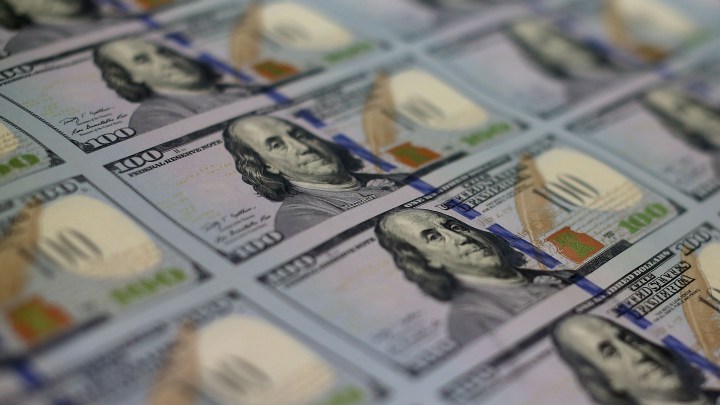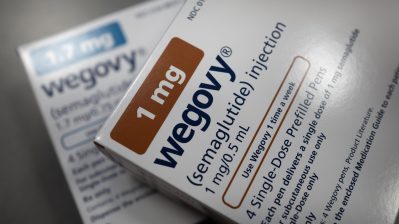
A lot’s changed since “It’s a Wonderful Life” was released in 1946. They don’t let kids work at the pharmacy anymore, you’re less likely to meet your spouse at a dance marathon, and banks are a bit more professional.
It’s that professionalization, largely triggered by Great Depression-era regulation, that has given our banking systems the reliability and stability we take for granted nowadays.
Banks and loan servicers aren’t mom-and-pop operations like Bailey Bros. Building & Loan, but there still are several banking options that prioritize the specific needs of their community.
Community development financial institutions can take many forms, including banks, credit unions, loan funds and venture capital funds. Their primary mission is to promote community development for people and communities that have historically lacked access to financing. David Brancaccio chatted with Michael Pugh, president and CEO of Carver Federal Savings Bank, a CDFI and African American-owned bank based in Harlem, New York, which invests 80 cents of every dollar it takes in as deposits back into the community.
David Brancaccio: From a practical point of view, if a savings customer came by and handed you $500 for safekeeping, what might you do with that money?
Michael Pugh: Within Carver, we are very proud to say that 80 cents of every dollar we have on deposit gets reinvested in the communities that we serve, helping to provide loans at affordable interest rates to borrowers, especially small businesses.
When we talk about that 80% reinvestment, we think about things like financial education programs, workshops for workforce development. And by having that customer make a deposit, trusting in Carver, those funds are going to be used to overall help the community continue to survive and thrive.
Brancaccio: Is Carver nonprofit or for-profit?
Pugh: So it is in fact a for-profit entity. It’s a financial institution, and we are publicly traded on the Nasdaq. I think the unique proposition for us is that because we are for-profit [and] we have this mission component, it allows us to continue thinking on both sides of our brain, being mentally ambidextrous, if you will. So when we provide loans, as an example, not only are we looking at the pricing that makes sense from an economics standpoint, but we’re also looking at critical things, like how many jobs will the small business add to our core markets that we serve? We understand that the communities we serve are ones that have historically been underserved. And we have the opportunity to be a catalyst for change while delivering favorable shareholder value.
Brancaccio: How do you think about risk when it comes to the investment the institution makes? Local banks and CDFIs, where you have this filter for the community well-being, might those be a little riskier for investments in certain cases?
Pugh: Well, here’s what we found that’s interesting: Customers within our core market that choose to bank with us and really understand the mission and what we’re trying to do, they make a concerted effort, even in the tough times, to pay.
Our loss experiences as a financial institution over the past 10 years, knock on wood, have been very favorable. I often joke that it’s hard for a small business owner to default on their loan if there’s a chance that they’re going to bump into me or one of my colleagues in the grocery store. Because we’re hyperlocal, our colleagues live in the communities that we serve. We believe that those personal relationships and the access to us really helps to significantly reduce the risks.
During the pandemic, many, many customers and many people within our community that chose to bank at some of the larger financial institutions — they’re great institutions and play a critical role in our nation’s economy — but those institutions that for many of our community [members] chose to bank at didn’t have access to decision-makers in order to help them during their very tough times. So the Paycheck Protection Program was an example. Those that went to some of the larger financial institutions, applied for the loan, [weren’t] quite able to get the loan application completed, needed help with it. And so they were left out of that first round of funds that were made available. When the second round of funds [was] made available, many of those same individuals came to Carver. And what they learned is that, you know, again, the power of having access to a decision-maker is a critical part of what’s needed in order to help your business, your small business, thrive. And we were able to deliver $55 million and access to capital at a local level to small businesses, and more importantly, the preservation of more than 5,000 jobs. So when you tie that back to risk, all of those loans — 100% of them — have been either forgiven or are on the way of being forgiven or repaid.
How to watch “It’s a Wonderful Life”
“It’s a Wonderful Life” is available to watch with a subscription on Amazon Prime Video, fuboTV and FilmBox. It is also available to rent on several platforms, including YouTube, Apple TV and Vudu. Some library card holders can stream for free on Hoopla and your local library may also have the film to borrow on DVD or VHS.
Select theaters will also host special screenings of the celebrated film between Dec. 18 and 21.
Is there something you’d like Econ Extra Credit to explore? A question you want answered? Let us know by sending the team an email. We’re at extracredit@marketplace.org.
Check out all our past selected films on our website.
There’s a lot happening in the world. Through it all, Marketplace is here for you.
You rely on Marketplace to break down the world’s events and tell you how it affects you in a fact-based, approachable way. We rely on your financial support to keep making that possible.
Your donation today powers the independent journalism that you rely on. For just $5/month, you can help sustain Marketplace so we can keep reporting on the things that matter to you.


















